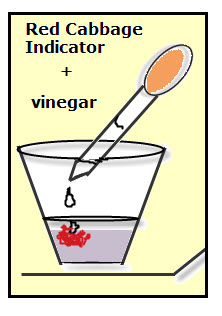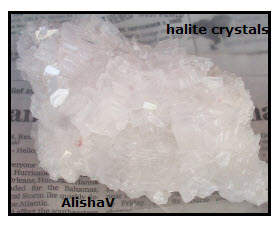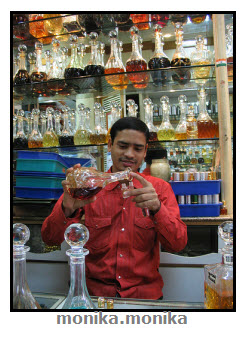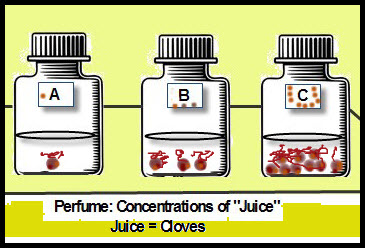A base is a chemical that has hydroxide (OH)–, as its negative part, such as NaOH (Na+ and OH–) Some chemicals, such as baking soda (NaHCO3), form a base when mixed with water. A base indicator is a chemical that changes color when added to a base. If the indicator is dry, such as litmus […]
Formation of Carbon-14
Cosmic Rays From Space Question: What are cosmic rays? Answer: Fast moving particles from space: 90% high energy protons (hydrogen nuclei), 10% high energy alpha particles (helium nuclei), 1% electrons Question: How are cosmic rays involved in the formation of carbon-14? Answer: Cosmic rays bombard the nuclei of gases in earth’s atmosphere resulting in neutrons […]
States of Matter: Solid
Matter exists naturally in four states. These states in order of energy from least energy to greatest energy are: Solid Liquid Gas Plasma A SOLID is the state of mater with the least amount of energy and the most structure. Solids exits in two basic forms: 1. Crystalline solids are those in which the particles […]
Acid/Base Indicators
Indicators Acid Indicators are materials that change color in an acid solution. Base Indicators are materials that change color in a base solution. Acid/Base Indicators are materials that have one color when mixed with an acid and another color when mixed with a base. Red Cabbage Juice is an acid/base Indicator. The juice has a […]
Polymer
A polymer is a very long chain-like molecule. Poly means many and mer means unit. A polymer is made by bonding (linking together) many small molecules called monomers (one unit). Polymers can be made of kinds of monomers and they can be linked together in different ways. A model of a polymer, such as the […]
Types of Crystals
CRYSTALS are solids with particles arranged in a regular, repeating pattern with flat surfaces. Most solids are CRYSTALLINE SOLIDS, which are solids made of crystals. For example, when liquid water freezes, the water molecules link together forming ice crystals. A large piece of ice is made up of many small ice crystals that fit together […]
How Do We Smell Perfume?
Answer: The part of perfume that gives it a specific smell is called its “juice.” Juice is a mixture of different oils, each with a specific scent. You smell these scents because they evaporate, which means to change from a liquid to a gas. These scented gas molecules move through the air and you smell […]
Perfume vs. Cologne
Question: What is the difference between perfume and cologne? Answer: First: The word perfume is commonly used to mean a substance that smells good and is used to make other things smell good. But “real” perfume —uum! instead of calling it real perfume, lets use the French word Parfum. Second: In reference to perfumes, the […]
Chemistry Books
20% Discount Code AFF20 Janice VanCleave’s Chemistry for Every Kid: 101 Easy Experiments that Really Work Janice VanCleave’s A+ Projects in Chemistry: Winning Experiments for Science Fairs and Extra Credit
How to Make Perfume
Question: How can I make perfume? Answer: We often use the word perfume in a generic way, meaning any liquid applied to the body to give it a pleasant fragrance. But perfume (parfume) –what I call “Real” perfume is more concentrated and is generally more expensive than a cologne with the same fragrance. Another way […]
- « Previous Page
- 1
- …
- 10
- 11
- 12
- 13
- 14
- …
- 19
- Next Page »





